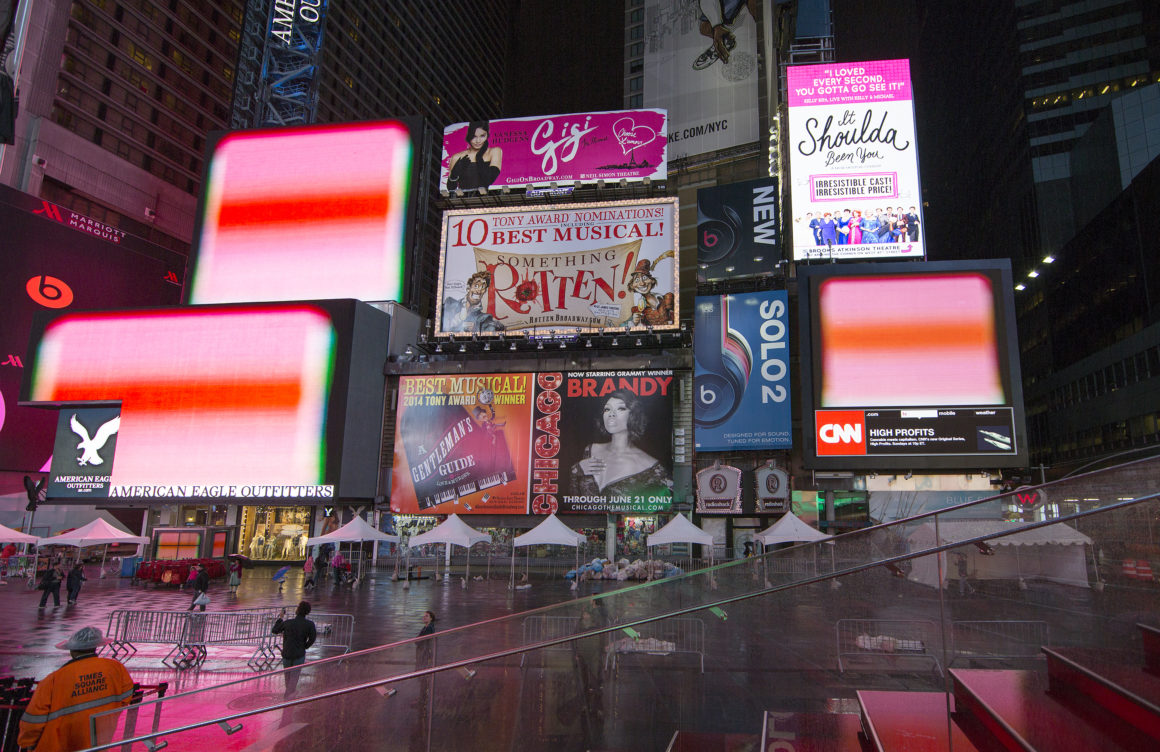
To address the controversy surrounding topless individuals and costume characters in Times Square, Mayor Bill de Blasio announced last month a multiagency taskforce that includes external stakeholders from the Times Square community, who will consider a variety of solutions to concerns over appropriateness and harassment by panhandlers. Comments by the mayor and police commissioner Bill Bratton that removal of the Times Square pedestrian plaza might be a viable solution have stoked international debate about the value of public space today—and the values it represents.
We spoke with Tim Tompkins, president of the Times Square Alliance, and a member of the taskforce, to get better insight on the current situation.
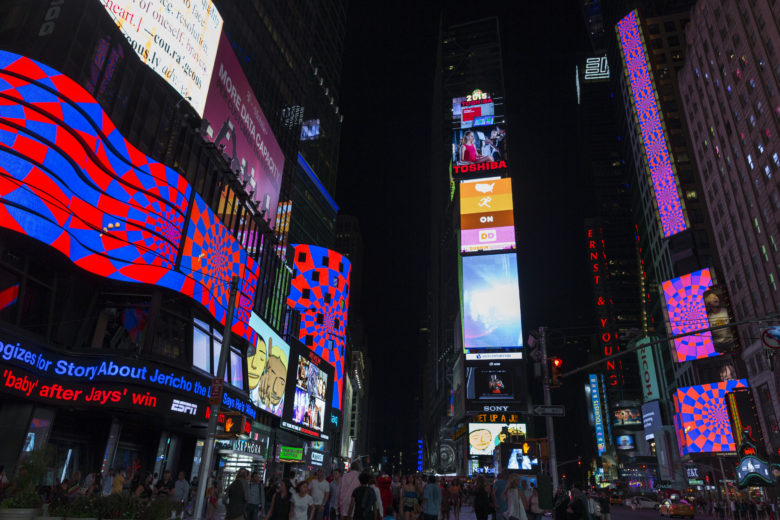
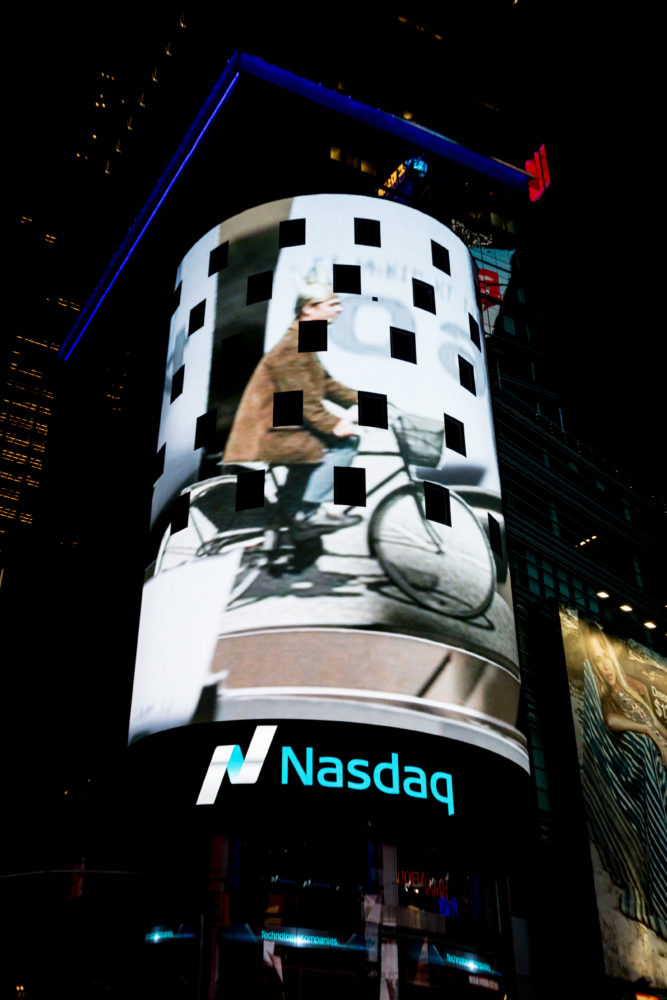
Before considering what’s at stake for the future of Times Square, Tompkins suggests a closer look at the microcosm of the metropolitan experience that the “Crossroads of the World” symbolizes. “Times Square has always served as a bellwether for New York City, urban policy, and what people like or do not like about city life,” he says. “Amid the current debate, there’s also recognition of the ways the pedestrian plazas have contributed to the city, the ways they’ve made life far easier for pedestrians. Their enormous and still-unrealized potential are all things we need to focus on.”
The media attention, both for and against the pedestrian plazas, mirrors the visibility they earned when first unveiled in 2009. In effect, design critics, non-profits, and advocacy groups have now rushed to the scene to spotlight the vitality of the plazas. “It takes a village to save a plaza, so certainly the public space and transportation organizations have become very active,” says Tompkins, referencing calls to action by Transportation Alternatives, a petition launched by the Design Trust for Public Space, and an article written in support of the plazas by Van Alen’s executive director David van der Leer and board chair Stephen Cassell.
What’s the next step? “I think that the most important thing is to engage a broad group of people in a conversation about public space,” says Tompkins. “It’s still such a small community of people who use this vocabulary even though it is literally everyone in the city that experiences our subways, our cities, our streets, our plazas. But it’s not part of the policy discussion in a broader realm. In that way, the conversation about Times Square prompts a conversation about a part of the city that we take for granted and don’t often think about strategically or philosophically.”
“To save a plaza or any public space you have to begin by talking about very real, specific, on the ground problems to make sure it’s functioning well as public space, which we have not done lately,” says Tompkins. Regarding his wishes for the taskforce, he forewarns that “any set of solutions has to reflect the desires of the community around that space. And even while we acknowledge the problems of the space, we need to embark on a hearty and robust discussion on the potential of the plazas, and how New York and this country are represented—a space where the energy, diversity, and spontaneity, and some of the chaos and friction and tension of urban life, are brought together.” While the debate simmers, the Alliance president finds respite in the plazas after dark.
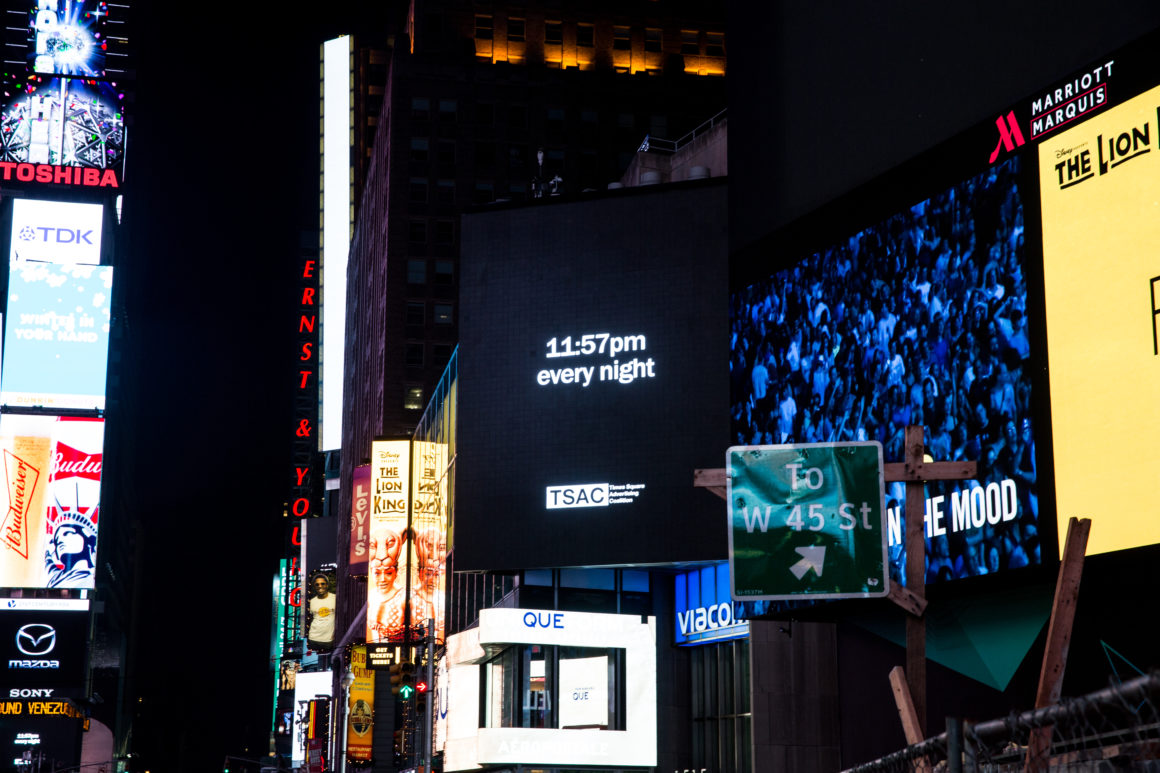
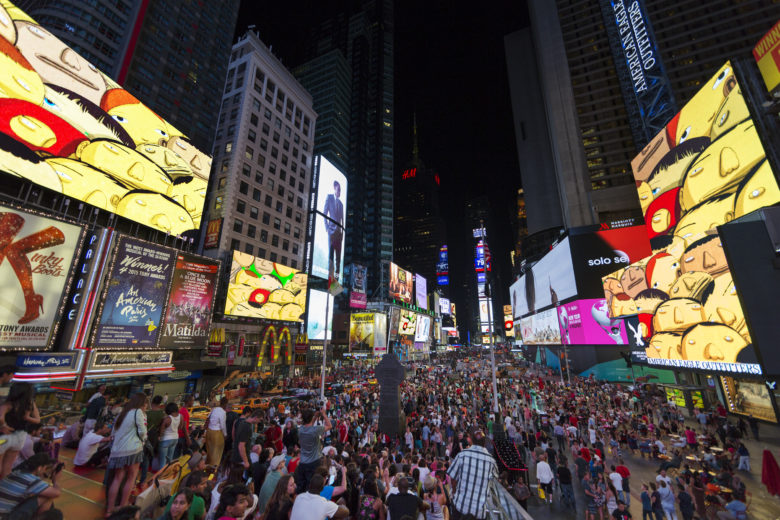
Each night, between 11:57 p.m. to midnight, the Square’s electronic billboards relinquish their assertive advertisements for a pause to broadcast public art. This is the Midnight Moment program, organized and supported by the Times Square Advertising Coalition in partnership with Times Square Arts, the public art program for the Times Square Alliance. This summer alone, visitors passing through the plazas have basked in the glow of abstract acoustic visualizations by Richard Garet, Eric Dyer’s Copenhagen Cycles Journey, a projection of a bicycle ride through the Danish capital, and until Aug. 31, animated characters conceived by Brazilian duo OSGEMEOS. If the sign operators of Times Square can come together in the name of art in public space, surely alignment between the city’s policymakers, law enforcement, and citizenry is not out of sight.
Tompkins advocates that we all take a moment to “catch our breath” amid the hysteria of the current desnudas debate, and capitalize on this situation as an “opportunity for a larger conversation about our political leadership’s vision, and also the citizenry’s vision for public space in the city.” He remains positive that no challenge to public space is insurmountable, and that any perceived disorder in the Times Square of today pales in comparison to the intersection’s state in the 70s, or nearby Bryant Park in the 80s. “Cities are capable of rising from the ashes,” says Tompkins, “and it is in public spaces that either decline or revitalization is most quickly and visibly made manifest.”